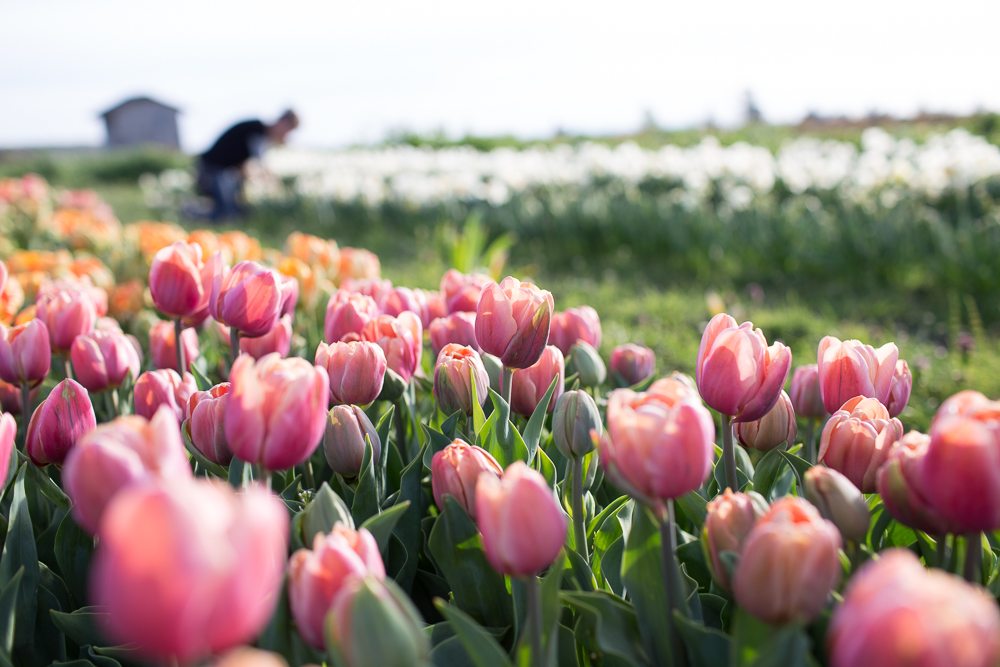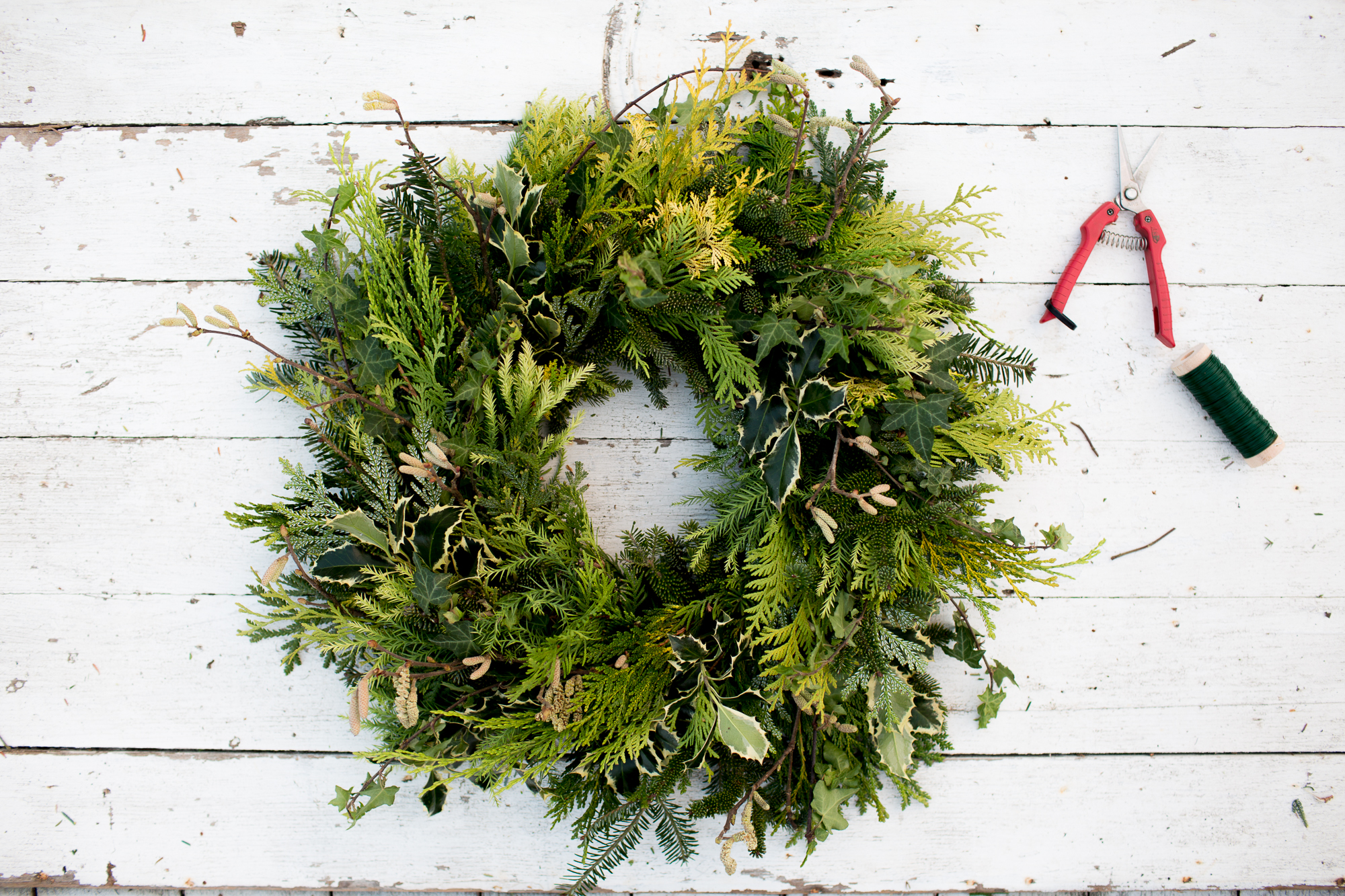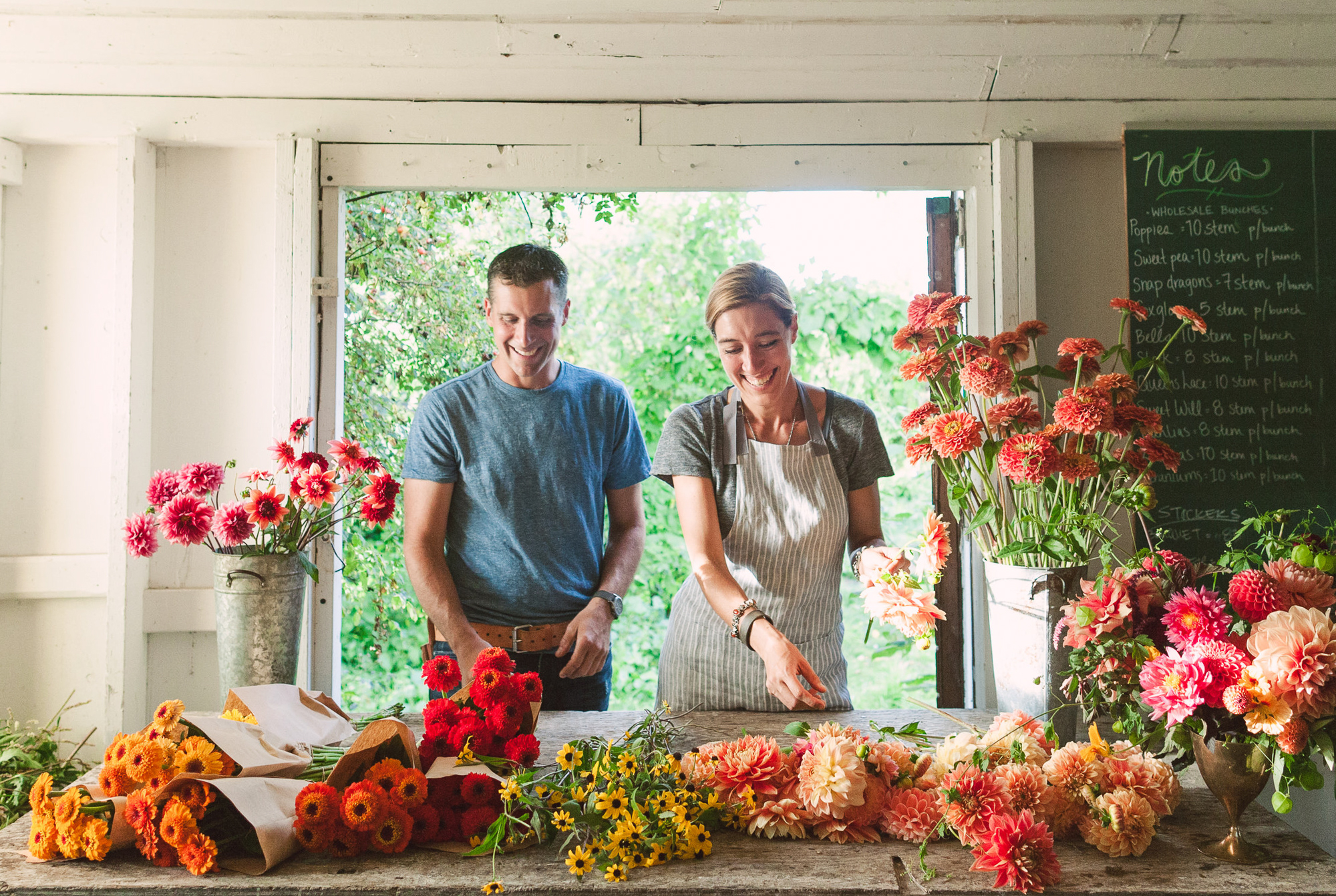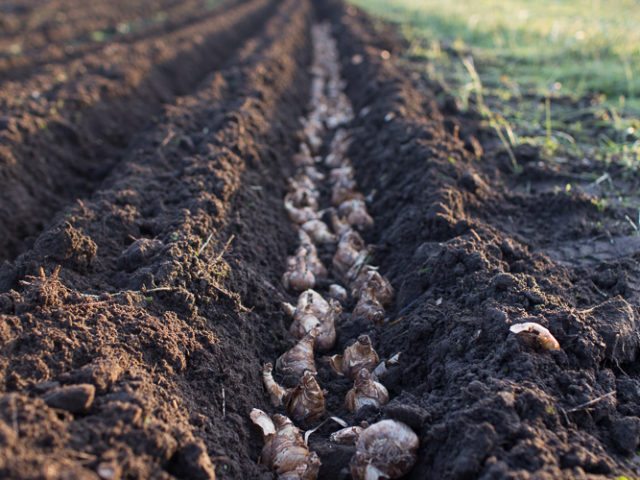
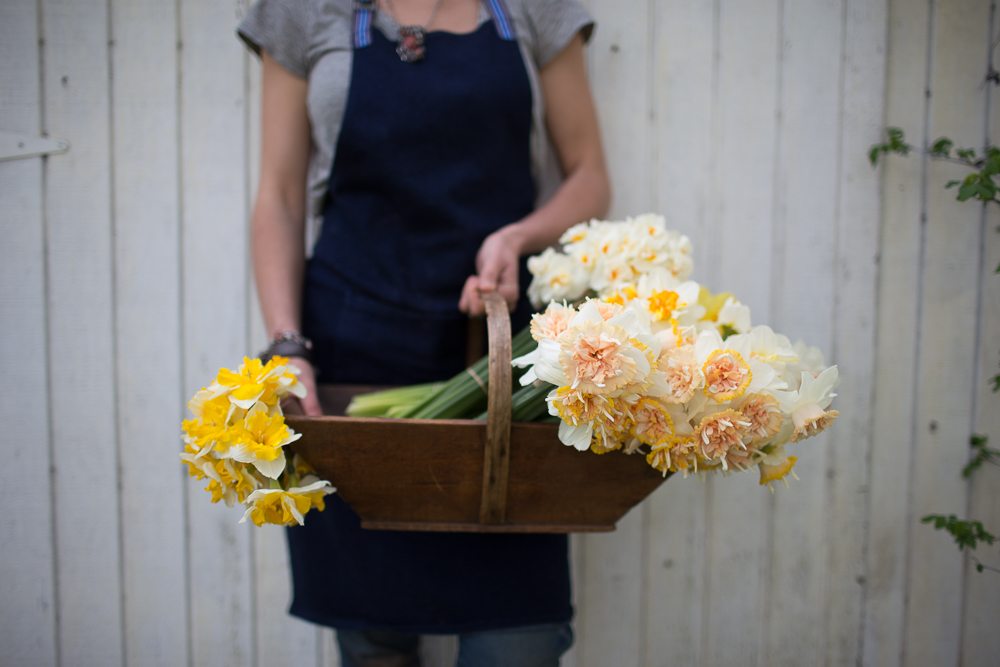
Fall-planted bulbs produce hardy, easy-to-grow spring flowers that thrive in both sun and part shade. As an added bonus, bulbs multiply rapidly, and just 2 to 3 years after planting, you’ll have at least double what you started with, making them reliable workhorses in the early-spring garden.
There are two different methods for growing these cheerful spring bloomers, depending on whether you simply want to add color to your spring landscape or harvest them in abundance as cut flowers. No matter how you plant them, be sure to pick a spot that gets at least partial sun and doesn’t have standing water, since really wet soils will encourage bulbs to rot.
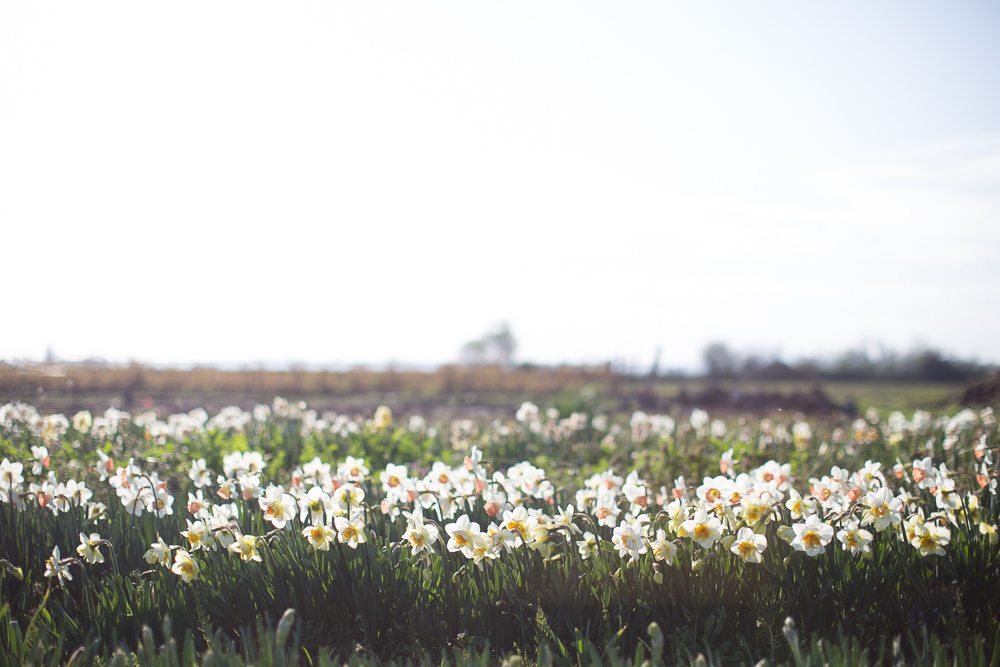
In the garden, narcissus make the most impact when planted en masse. For a dazzling display, I recommend ditching the bulb planter and instead planting clumps of at least 10 to 20 bulbs. Simply dig out a generous circle of soil, 6 to 8 in (15 to 20 cm) deep, mix in a little bulb fertilizer and compost, and then plant your bulbs at a depth two times the bulb’s height and as far apart as they are wide.
Once your bulbs are securely in place, water deeply and then refill the hole with the soil you removed earlier. Add a few inches of well-rotted compost on top to act as a mulch. Be sure to insert some type of stake so you remember where you planted them. If your intention is to grow narcissus solely for cutting, then you can follow this same method but plant the bulbs in long rows.
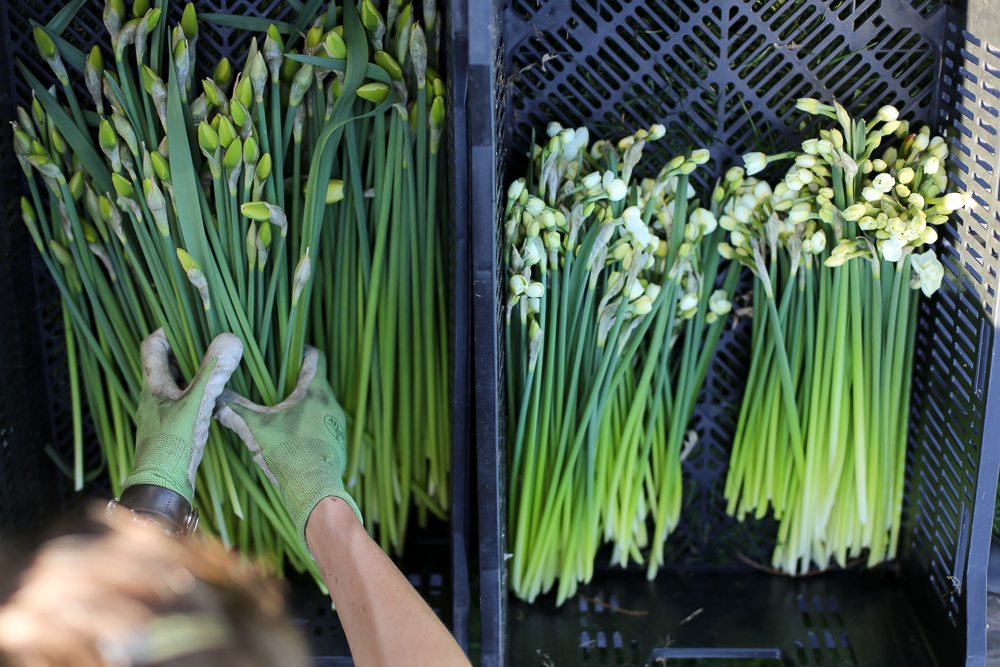
In the spring, harvest blooms that haven’t fully opened. If you pick when the buds are fully colored but still slightly nodding (known as the “gooseneck” stage), you can expect a solid week of vase life.
Wear gloves when harvesting narcissus because they ooze a slimy sap that can cause skin irritation.
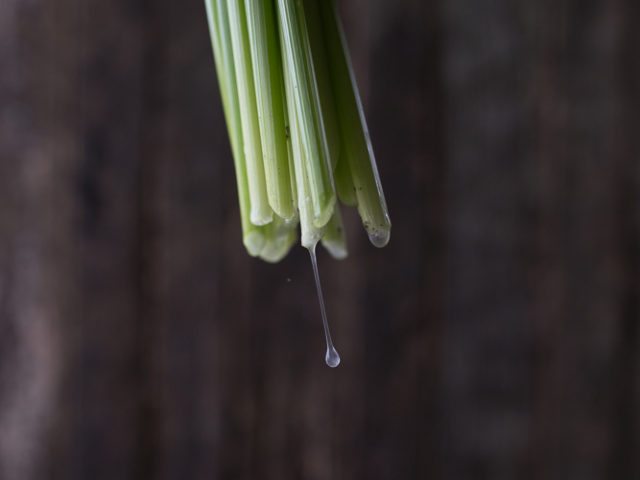
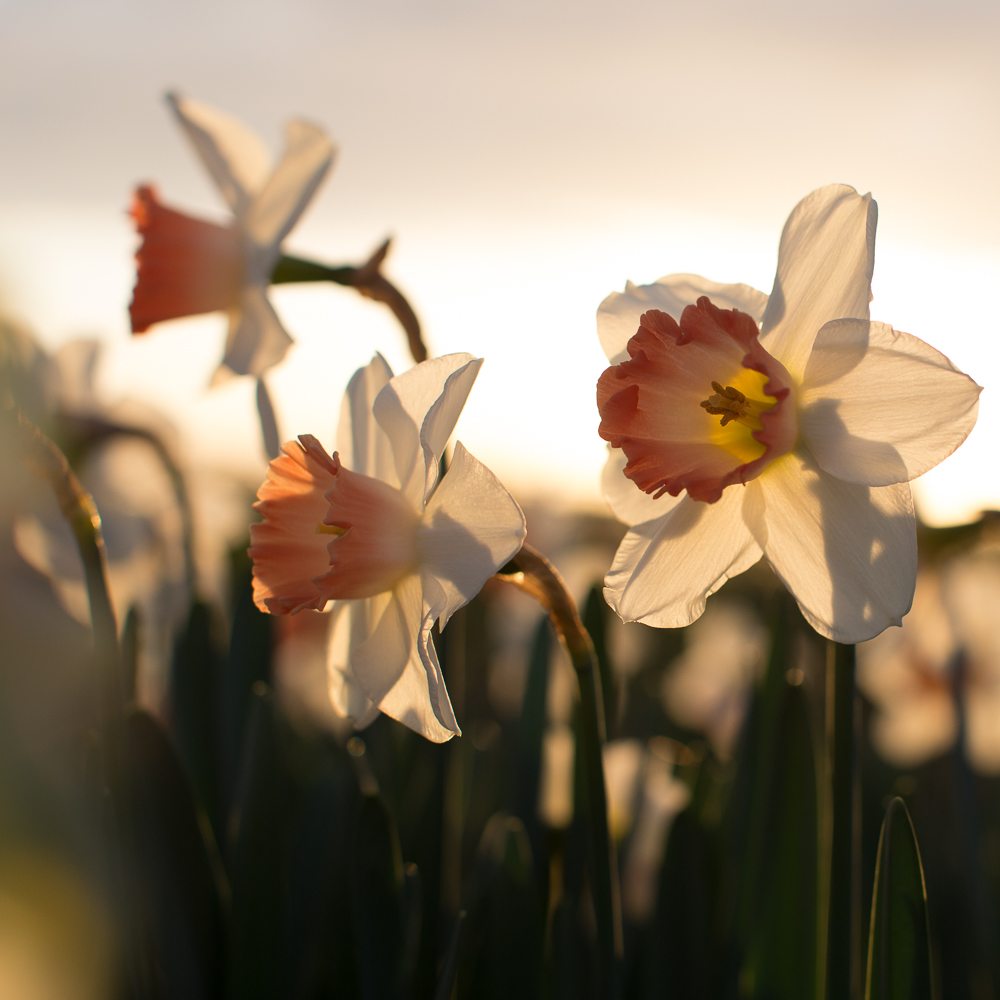
This slimy sap can shorten the vase life of other flowers significantly if they’re combined with cut narcissus. To avoid affecting other blooms in an arrangement, you’ll need to “condition” the narcissus first.
To do this, place freshly cut stems in cool water, on their own, for 3 to 4 hours; during that time, the stem ends will callus over and the sap (which will inhibit other flowers from taking up water) will stop flowing.
After that, don’t recut the narcissus stems when adding them to arrangements because the sap will start flowing again. Of course, you can create an arrangement solely of narcissus, either just one variety or several, and the sap won’t be an issue.
